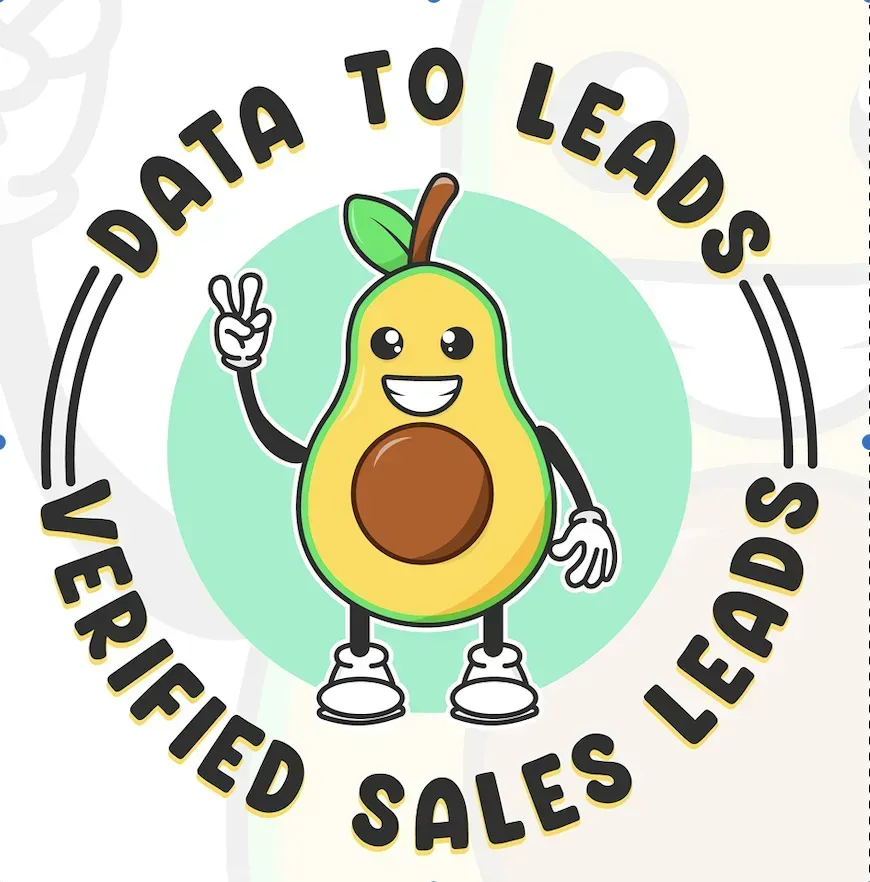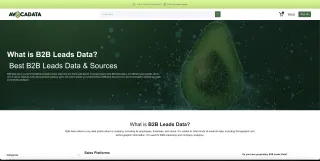Unlock the Power of Custom Databases with Avocadata
Discover how Avocadata empowers you to create niche, custom databases tailored specifically for your clients—such as generating high-quality leads for vocal coaches. This comprehensive tutorial guides you through leveraging our white-label solution, enabling you to offer personalized data services under your own brand seamlessly.
Discover how to:
- Present Custom-Built Databases: Showcase unique data solutions crafted to meet your clients’ specific needs, demonstrating your expertise in delivering targeted results.
- Utilize Flexible State-Based Searches: Implement customizable dropdowns and text fields for streamlined filtering across multiple states (e.g., "GA, NY, NJ"), enhancing the functionality and user experience of your databases.
- Leverage White Labeling: Brand and deliver these data services as your own without the complexity, allowing you to maintain a consistent brand presence while expanding your service offerings.
- Enhance Your Service Offerings: Avocadata’s intuitive data management tools make it effortless to meet your clients’ niche data needs, perfect for B2B lead generation and providing personalized solutions that drive business growth.
Watch Our Tutorial
Avocadata’s robust features and user-friendly interface make it the ideal choice for businesses looking to enhance their data services and generate consistent, high-quality leads.
Stay updated with the latest in data solutions and lead generation strategies by following us:
#Avocadata #CustomDatabases #B2BLeads #WhiteLabel #DataSolutions #LeadGeneration #Tutorial #BusinessGrowth
1. Introduction to Databases
A database is an organized collection of data. In the context of Avocadata (or any CRM platform), the goal is to efficiently store, retrieve, and manage this data. Before diving into individual lessons, it’s essential to understand the overall structure of a database and its key components.
Why a Hierarchical Approach?
- Clarity – Breaking down the database structure into understandable levels (e.g., columns, tables, relationships) makes it easier to plan and maintain.
- Scalability – As your data and needs grow, having a well-segmented hierarchy allows you to add new tables and columns without breaking your existing setup.
- Data Governance – Establishing rules and processes (e.g., security, data quality checks) at each level ensures your database remains accurate and secure.
2. Hierarchy in Databases
Think of your database as a hierarchy of components:
- Database – The overall container for your data.
- Tables – Within your database, each table stores data about a specific entity (e.g., Customers, Products, Orders).
- Columns – Within each table, columns define the categories of information stored for each record (e.g., CustomerID, FirstName, LastName).
- Constraints & Relationships – Rules that govern how data is stored and how tables connect (e.g., primary keys, foreign keys, data types).
- Data Governance – Policies and practices ensuring the quality, security, and proper usage of data throughout your database.
You can create separate lessons focusing on each of these levels, allowing for in-depth exploration and hands-on practice.
3. Building Blocks: Columns and Tables
3.1 Columns (Attributes)
Definition: Labels that categorize the data (e.g., Name, Email, Price).
Data Types: Specify the type of information (text, numbers, dates) each column can hold.
Constraints: Rules to keep data accurate (e.g., NOT NULL, UNIQUE, PRIMARY KEY).
Customer Table Columns: CustomerID (integer, primary key), FirstName (text), LastName (text), Email (text, unique), SignupDate (date).
3.2 Tables (Entities)
Definition: Collections of related columns (attributes) that describe an entity (e.g., Customer, Orders).
Purpose: Organize data into logical groupings so it’s easy to locate and maintain.
- Customers Table: Stores all customer information.
- Products Table: Stores details on items available for sale.
- Orders Table: Links customers to products they purchase.
4. Establishing Relationships
4.1 Primary Keys and Foreign Keys
Primary Key: A unique identifier for each record in a table (e.g., CustomerID).
Foreign Key: A column in one table that references the primary key in another
(e.g., the CustomerID in Orders references the CustomerID in the Customers table).
4.2 One-to-Many, Many-to-Many Relationships
One-to-Many: A single record in one table can be linked to multiple records in another table
(e.g., one Customer can have many Orders).
Many-to-Many: Multiple records in one table can relate to multiple records in another
(often requires a “join” or “link” table).
5. Data Governance
Ensuring data consistency, security, and quality is paramount:
Data Quality Management
- Clean data regularly.
- Enforce consistent formatting and validation.
Data Security & Privacy
- Set up access controls and permissions.
- Encrypt sensitive data.
Data Stewardship
- Assign roles to individuals responsible for overseeing data accuracy and rules.
Metadata Management
- Keep track of column definitions, data sources, and usage guidelines.
- Document everything so teams know how to use and interpret the data correctly.
6. Putting It All Together
-
Plan Your Database
- Identify key entities (e.g., Customers, Products, Orders).
- Sketch out the columns needed for each table.
-
Define Columns and Constraints
- Assign data types that match the information stored.
- Use constraints (PRIMARY KEY, UNIQUE, NOT NULL) to maintain integrity.
-
Create Relationships
- Link tables by matching primary keys to foreign keys.
- Decide on one-to-many or many-to-many relationships where appropriate.
-
Implement Data Governance
- Set rules for data entry, updates, and sharing.
- Establish guidelines for data privacy and security.
-
Review and Iterate
- Continuously refine your schema (tables, columns, and relationships) as needs evolve.
- Keep your data governance rules up to date with any changes to your organizational processes.










